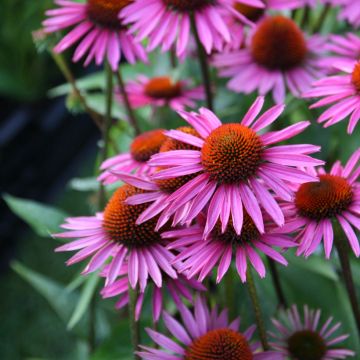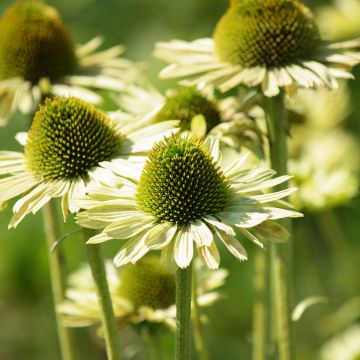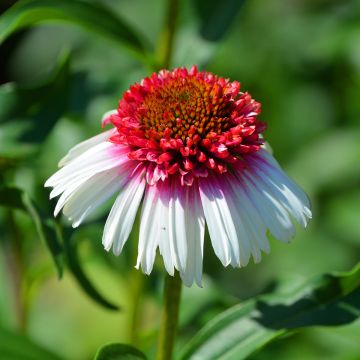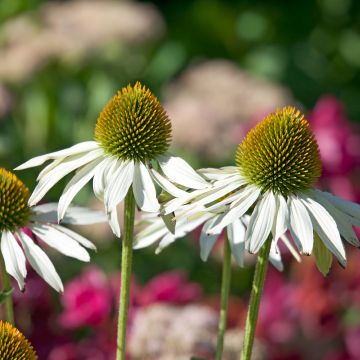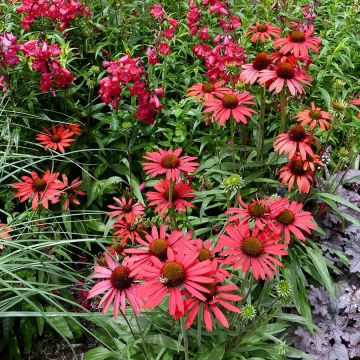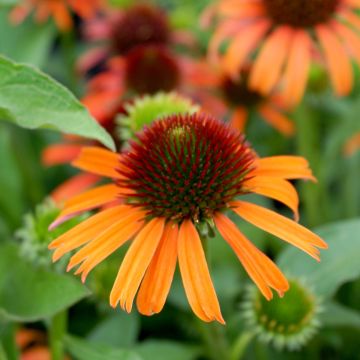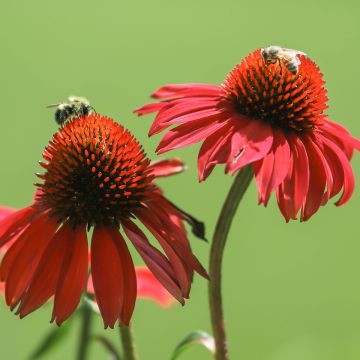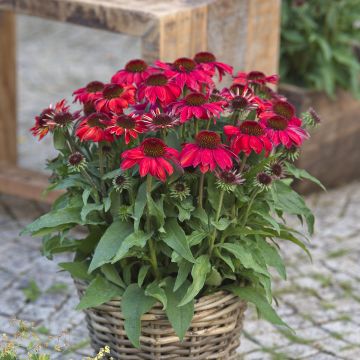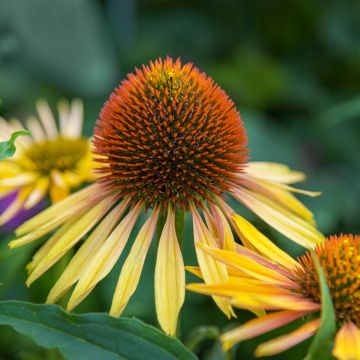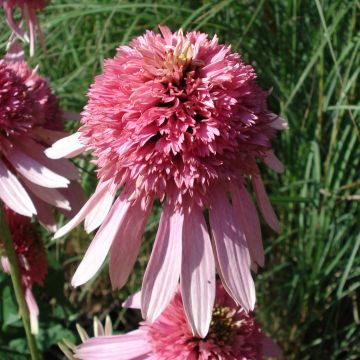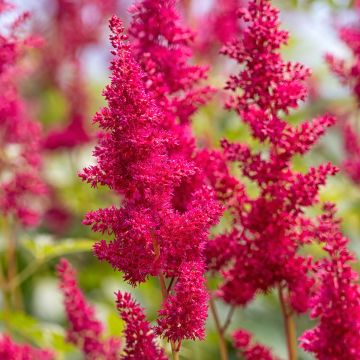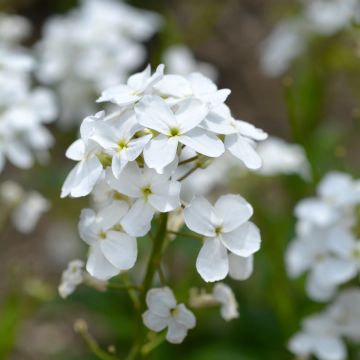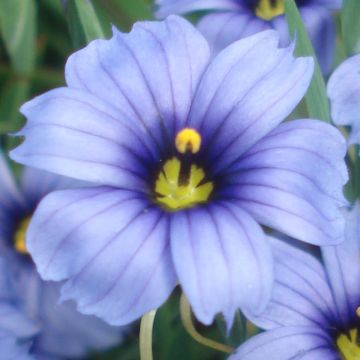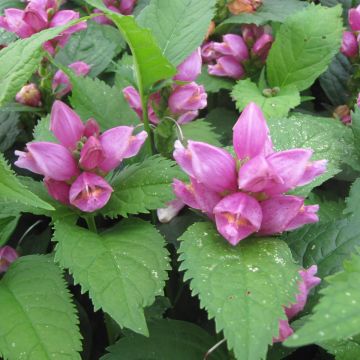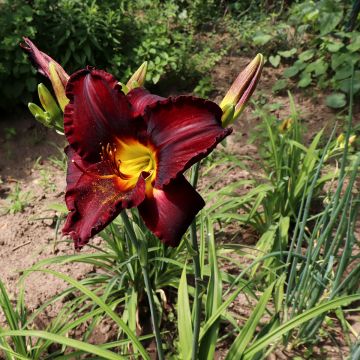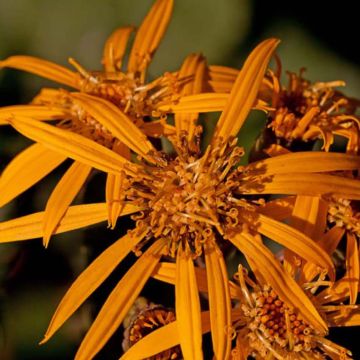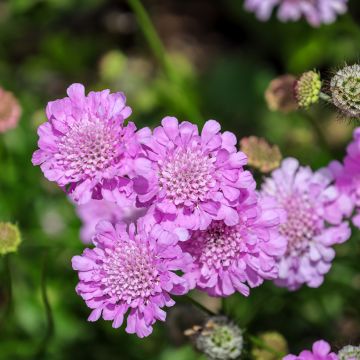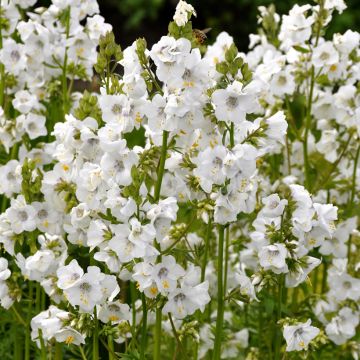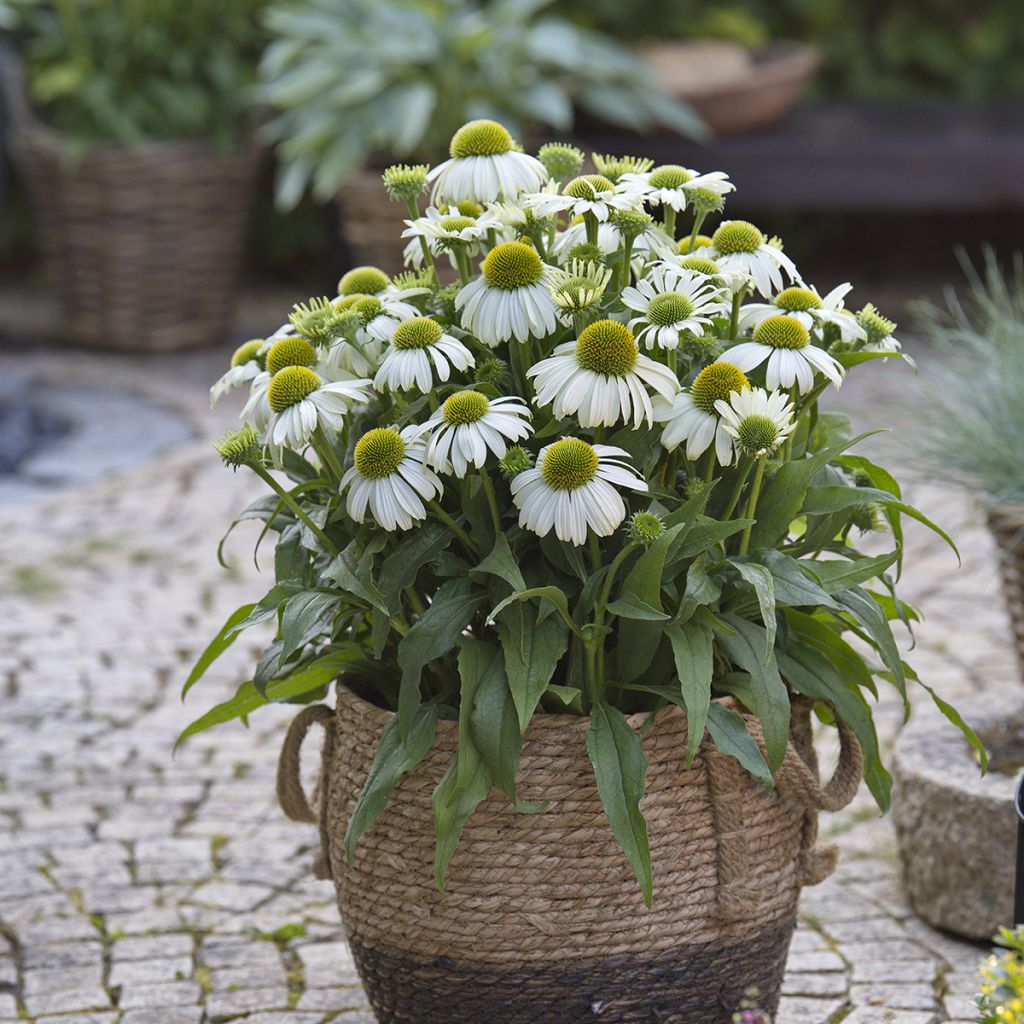

Echinacea SunMagic Vintage White - Purple coneflower
Echinacea SunMagic Vintage White - Purple coneflower
Echinacea purpurea Sun Magic Vintage White ®
Eastern purple coneflower, Purple coneflower
This item cannot be shipped to the selected country
Delivery charge from €5.90
More information
Schedule delivery date,
and select date in basket
This plant carries a 12 months recovery warranty
More information
We guarantee the quality of our plants for a full growing cycle, and will replace at our expense any plant that fails to recover under normal climatic and planting conditions.
From €5.90 for pickup delivery and €6.90 for home delivery
Express home delivery from €8.90.
Does this plant fit my garden?
Set up your Plantfit profile →
Description
Echinacea SunMagic 'Vintage White' is the white flower variation of this series with numerous qualities. Its large flat, horizontal daisies are arranged around a prominent central, green-yellow disk. The plant is compact, well-branched, of medium size, suitable for both garden and pots. It is very floriferous and produces 25 to 30 flowers per plant from the first year during the summer and into early autumn.
Echinacea purpurea 'Vintage White' belongs to the Asteraceae family. It is a horticultural creation resulting from Rudbeckia purpurea, native to the western United States, from Georgia to Michigan, passing through Oklahoma and Ohio, among others. This perennial with a strong character confidently colonises rocky meadows, savannas, clear undergrowth, and roadside edges in its natural environment. 'Vintage White' has a solid, bushy, upright, and dense habit, reaching a height of 60 cm and a width of 45 cm. The opposite, lanceolate, green leaves are covered in rough hairs. Flowering occurs from July to September, and the slightly fragrant flowers are loved by butterflies. The branched stems are each topped with a solitary inflorescence, 10 to 12 cm in diameter, with a disk surrounded by a collar of horizontal or slightly trailing, bright orange petals. The fruit is an achene that releases seeds for birds. This plant firmly and deeply anchors itself in the soil with its highly developed root system.
Rudbeckia 'Vintage White' is a very resistant plant that adapts to difficult conditions, occasionally tolerating intense heat, humidity, and drought. Its flowering brings dynamism and cheerfulness to flower beds. Play with varied colours and different forms of flowering plants, such as foxglove, daylilies and bee balms. Its large daisies are beautifully accompanied by golden or pink spikes of ornamental grasses like Stipa tenuifolia, Schizachyrium scoparium, or Muhlenbergia capillaris. Its vibrant combination with another foliage plant, Lady's mantle, is superb. Finally, it brightens up fresh or dried flower bouquets.
Report an error about the product description
Echinacea SunMagic Vintage White - Purple coneflower in pictures


Flowering
Foliage
Plant habit
Botanical data
Echinacea
purpurea
Sun Magic Vintage White ®
Asteraceae
Eastern purple coneflower, Purple coneflower
Cultivar or hybrid
Other Echinacea - Coneflower
Planting and care
Plant them in a fresh and deep, well-worked soil, in a sunny location. These vigorous plants are greedy and will thrive better if you regularly provide them with a good fertiliser. Cut back faded flowers at the end of summer to avoid self-seeding.
Echinaceas dislike waterlogged soils in winter. The soil must be deep and loose to accommodate its root system. Cut off faded flowers as they appear. Divide the clump when flowering slows down. Mulch the base in May to keep it moist in summer, as it is sensitive to lack of water during flowering.
Planting period
Intended location
Care
This item has not been reviewed yet - be the first to leave a review about it.
Summer flowering perennials
Haven't found what you were looking for?
Hardiness is the lowest winter temperature a plant can endure without suffering serious damage or even dying. However, hardiness is affected by location (a sheltered area, such as a patio), protection (winter cover) and soil type (hardiness is improved by well-drained soil).

Photo Sharing Terms & Conditions
In order to encourage gardeners to interact and share their experiences, Promesse de fleurs offers various media enabling content to be uploaded onto its Site - in particular via the ‘Photo sharing’ module.
The User agrees to refrain from:
- Posting any content that is illegal, prejudicial, insulting, racist, inciteful to hatred, revisionist, contrary to public decency, that infringes on privacy or on the privacy rights of third parties, in particular the publicity rights of persons and goods, intellectual property rights, or the right to privacy.
- Submitting content on behalf of a third party;
- Impersonate the identity of a third party and/or publish any personal information about a third party;
In general, the User undertakes to refrain from any unethical behaviour.
All Content (in particular text, comments, files, images, photos, videos, creative works, etc.), which may be subject to property or intellectual property rights, image or other private rights, shall remain the property of the User, subject to the limited rights granted by the terms of the licence granted by Promesse de fleurs as stated below. Users are at liberty to publish or not to publish such Content on the Site, notably via the ‘Photo Sharing’ facility, and accept that this Content shall be made public and freely accessible, notably on the Internet.
Users further acknowledge, undertake to have ,and guarantee that they hold all necessary rights and permissions to publish such material on the Site, in particular with regard to the legislation in force pertaining to any privacy, property, intellectual property, image, or contractual rights, or rights of any other nature. By publishing such Content on the Site, Users acknowledge accepting full liability as publishers of the Content within the meaning of the law, and grant Promesse de fleurs, free of charge, an inclusive, worldwide licence for the said Content for the entire duration of its publication, including all reproduction, representation, up/downloading, displaying, performing, transmission, and storage rights.
Users also grant permission for their name to be linked to the Content and accept that this link may not always be made available.
By engaging in posting material, Users consent to their Content becoming automatically accessible on the Internet, in particular on other sites and/or blogs and/or web pages of the Promesse de fleurs site, including in particular social pages and the Promesse de fleurs catalogue.
Users may secure the removal of entrusted content free of charge by issuing a simple request via our contact form.
The flowering period indicated on our website applies to countries and regions located in USDA zone 8 (France, the United Kingdom, Ireland, the Netherlands, etc.)
It will vary according to where you live:
- In zones 9 to 10 (Italy, Spain, Greece, etc.), flowering will occur about 2 to 4 weeks earlier.
- In zones 6 to 7 (Germany, Poland, Slovenia, and lower mountainous regions), flowering will be delayed by 2 to 3 weeks.
- In zone 5 (Central Europe, Scandinavia), blooming will be delayed by 3 to 5 weeks.
In temperate climates, pruning of spring-flowering shrubs (forsythia, spireas, etc.) should be done just after flowering.
Pruning of summer-flowering shrubs (Indian Lilac, Perovskia, etc.) can be done in winter or spring.
In cold regions as well as with frost-sensitive plants, avoid pruning too early when severe frosts may still occur.
The planting period indicated on our website applies to countries and regions located in USDA zone 8 (France, United Kingdom, Ireland, Netherlands).
It will vary according to where you live:
- In Mediterranean zones (Marseille, Madrid, Milan, etc.), autumn and winter are the best planting periods.
- In continental zones (Strasbourg, Munich, Vienna, etc.), delay planting by 2 to 3 weeks in spring and bring it forward by 2 to 4 weeks in autumn.
- In mountainous regions (the Alps, Pyrenees, Carpathians, etc.), it is best to plant in late spring (May-June) or late summer (August-September).
The harvesting period indicated on our website applies to countries and regions in USDA zone 8 (France, England, Ireland, the Netherlands).
In colder areas (Scandinavia, Poland, Austria...) fruit and vegetable harvests are likely to be delayed by 3-4 weeks.
In warmer areas (Italy, Spain, Greece, etc.), harvesting will probably take place earlier, depending on weather conditions.
The sowing periods indicated on our website apply to countries and regions within USDA Zone 8 (France, UK, Ireland, Netherlands).
In colder areas (Scandinavia, Poland, Austria...), delay any outdoor sowing by 3-4 weeks, or sow under glass.
In warmer climes (Italy, Spain, Greece, etc.), bring outdoor sowing forward by a few weeks.

































